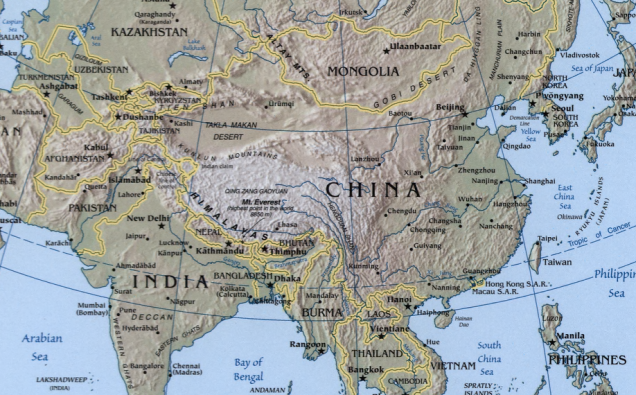
Three nations are moving toward confrontation in the Western Pacific – the world’s two most powerful military forces, and a small country that wants the same reputation.
North Korea celebrates the 105th birthday of its founder, Kim Il Sung, this weekend, and in past years the anniversary has been celebrated by national parades and popular demonstrations, along with displays of its growing military strength.
This year is expected to be no exception – and there is growing concern that the nation’s leader, Kim Jong Un, grandson of North Korea’s founder, may use the occasion to mark his country’s entry into a new era of nuclear weapons strength.
North Korean television has shown Kim to be pushing hard on development of both its nuclear weapons capabilities and the missile delivery system required to launch his country into the small but powerful international nuclear club.
Increasingly warlike statements from Kim Jong Un have caused growing concern in Washington and Beijing. In recent months he has accused the United States of making threatening moves toward North Korea, and has recently criticized the Chinese government for aligning itself with the US.
In the latest developments, President Donald Trump has said he is dispatching an armada to Korean Peninsula, while Pyongyang has threatened to launch a nuclear attack on US in retaliation for any aggression. President Trump and his Chinese counterpart Xi Jinping in a telephonic conversation discussed the latest standoff, with Beijing calling for peaceful resolution to the North Korean issue.
President Trump said recently, “North Korea is looking for trouble,” and asked China to help control the situation – a role China has played for decades. Trump added, “If China decides to help, that would be great. If not, we will solve the problem without them!”
Pyongyang has responded by saying it would fight “any mode of war”, and has said in the past that it would aim its missiles against US installations in the Western Pacific. North Korean missile test flights have so far been fired into the nearby Sea of Japan, but are thought to be increasingly capable of reaching targets farther away – including, in the not-too-distant future, the US mainland.
North Korea was high on the agenda when Chinese President Xi Jinping visited the US and met with President Trump in Florida. Following two days of talks, the diversion of US naval forces toward the Korean peninsula, and the subsequent exchange of threats between Washington and Pyongyang, Xi reportedly telephoned the US president to urge a peaceful resolution of tensions.
China has long been North Korea’s primary supporter, providing food and resources to boost the economy of the impoverished communist country. This role has brought with it the unwanted responsibility of keeping the warlike tendencies of North Korea and its authoritarian leadership under control.
The current tensions revolving around Kim Jong Un’s bellicose posture are the most significant test in years for the international community. It’s a test of both the negotiating skills and foreign policies of the new US administration, and the patience and endurance of China in its efforts to keep the peace off its northern coasts.
The next step in this three-way confrontation could come as North Koreans celebrate the birth of their nation’s founder this weekend.
FEATURED IMAGE on the top shows a map showing Chinse and regional geogrphy Photo Credit: CIA Factbook

















